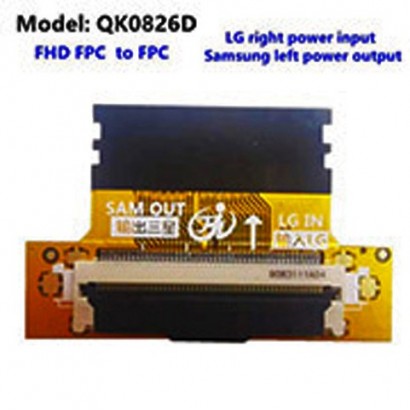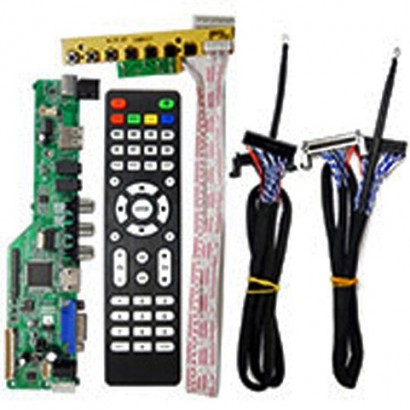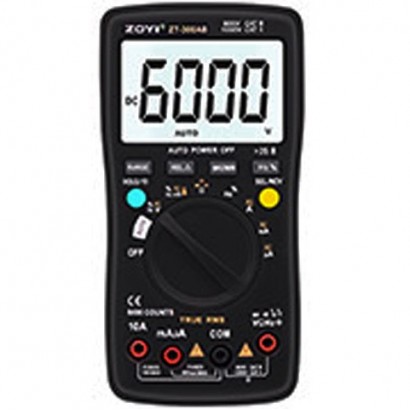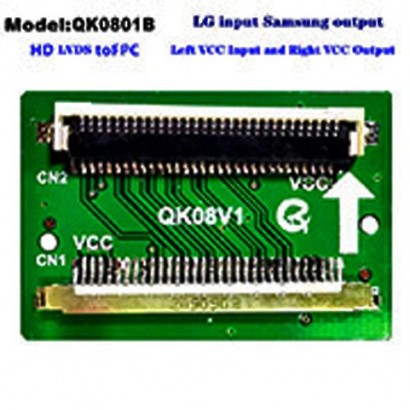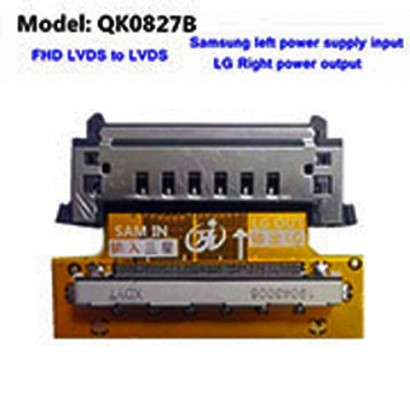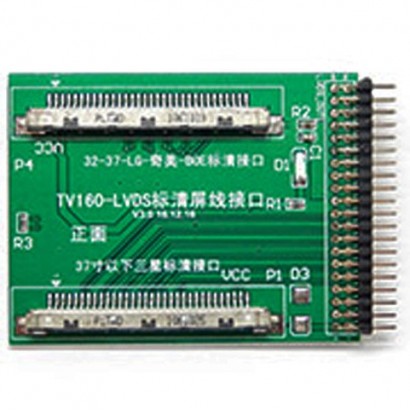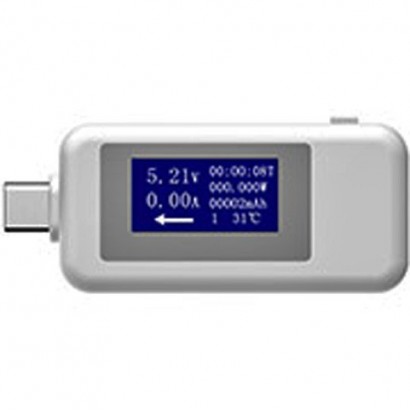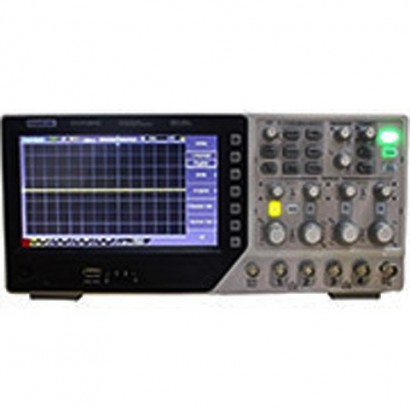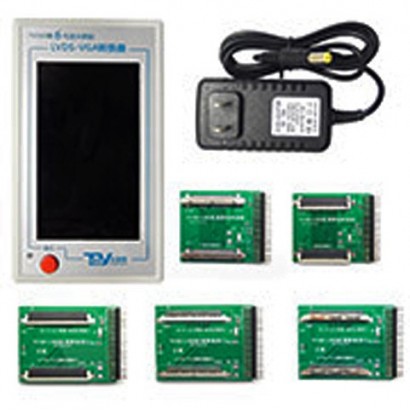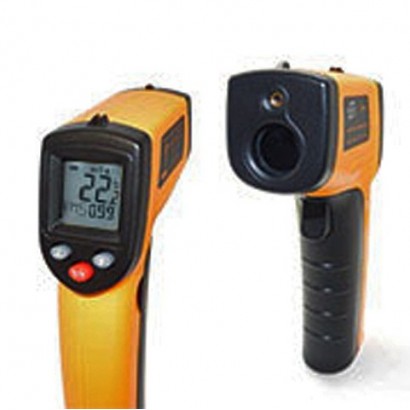Features:
1.4 Channel Digital Oscilloscope + Arbitrary/Function Waveform Generator + Synchronizing Signal + External Trigger;
2.The Keys for osilloscope and waveform generator is seperated for convenient to operate it simultaneously;
3.Large and clear display (7 inch 64K color LCD display, Resolution 800x480), more clear and realistic waveform;
4.Oscilloscope: 1GSa/s Sample Rate, 200/100/70MHz Bandwidth, more than 20 kinds of auto measurement functions;
5.Powerful Trigger Function: Edge, Video, Pulse, Slope, Over time, Alternative;
6.Arbitrary/Function Waveform Generator: 25MHz, 12 bits resolution, 200MHz DDS, Arbitrary wave/square wave/sine wave/triangle 7.wave/trapezoidal wave/pulse wave/DC is easy to simulate transducer.
8.Support SD card, VGA function (optional);
9.Integrated USB Host, Support USB disk storage, USB interface/SD card system update.
Specifications:
Model DSO4204C
Oscilloscope
Sample Rate Sampling Rate Range: 1GSa/s
Equivalent Sample Rate: 25GSa/s
Acquisition Modes
Normal Normal data only
Peak Detect High-frequency and randon glith capture
Average Wavefom Average, selectable 4,8,16,32,64,128
Inputs
Inputs Coupling AC, DC, GND
Inpits Impendance 1MO2% ?20pF3pF
Probe Attenuation 1X, 10X
Supported Probe Attenuation Factor 1X, 10X, 100X, 1000X
Maximum Input Voltage CAT I and CAT II: 300VRMS (10)
CAT III: 150VRMS(1);
Installation Category II: derate at 20dB/decade above 100kHz to 13V peak AC at 3MHz* and above. For non-sinusoidal waveforms, peak value must be less than 450V. Excursion above 300V should be of less than 100ms duration. RMS signal level including all DC components removed through AC coupling must be limited to 300V. If these values are exceeded, damage to the oscilloscope may occur.
Horizontal
Sample Rate Range 1GS/s
Waveform Interpolation (sin x)/x
Record Length 40K
SEC/DIV Range 2ns/div to 40s/div 4ns/div to 40s/div
Sample Rate and 50ppm(at over any =1ms time interval)
Delay Time Accuracy
Position Range 2ns/div to 10ns/div; 20ns/div to 80us/div; (-8div x s/div) to 40ms;
(-4div x s/div) to 20ms; 200us/div to 40s/div; (-8div x s/div) to 400s
Delta Time Measurement Accuracy
(Full Bandwidth) Single-shot, Normal mode: (1 sample interval +100ppm reading + 0.6ns);
>16 averages: (1 sample interval + 100ppm reading + 0.4ns);
Sample interval = s/div 200
Vertical
Vertical Resolution 8-bit resolution, all channel sampled simultaneously
Position Range 2mV/div to 10V/div
Bandwidth 200MHz 100MHz 70MHz
Rise Time at BNC( typical) 1.8ns 3.5ns 5ns
Analog Bandwidth in Normal and Average modes at BNC or with probe, DC Coupled 2mV/div to 20mV/div, 400mV; 50mV/div to 200mV/div, 1V
500mV/div to 2V/div, 40V; 5V/div, 50V
Math +, -, *, /, FFT
FFT Windows: Hanning, Flatop, Rectamgular, Bartlett, Blackman;
1024 sample point
Bandwidth Limit 20MHz
Low Frequency Response (-3db) =10Hz at BNC
DC Gain Accuracy 3% for Normal or Average acquisition mode, 5V/div to 10mV/div;
4% for Normal or Average acquisition mode, 5mV/div to 2mV/div
DC Measurement Accuracy,
Average Acquisition Mode When vertical displacement is zero, and N =16: (3% reading + 0.1div + 1mV) only 10mV/div or greater is selected;
When vertical displacement is not zero, and N=16: [3% (reading + vertical position) + 1% of vertical position + 0.2div]; Add 2mV for settings from 2mV/div to 200mV/div; add 50mV for settings from 200mV/div to 5V/div
Volts Measurement Repeatability, Average Acquisition Mode Delta volts between any two averages of =16 waveforms acquired under same setup and ambient conditions
Trigger System
Trigger Types Edge, Video, Pulse, Slope, Over time, Alternative
Trigger Source CH1, CH2, EXT, EXT/5, AC Line
Trigger Modes Auto, Normal, Single
Coupling Type DC, AC, Noise Reject, HF Reject, LF Reject
Trigger Sensitivity
(Edge Trigger Type) DC(CH1,CH2):
1div from DC to 10MHz; 1.5div from 10MHz to 100MHz; 2div from 100MHz to Full;
DC(EXT):
200mV from DC to 100MHz; 350mV from 100MHz to 200MHz;
DC(EXT/5):
1V from DC to 100MHz;1.75V from 100MHz to 200MHz;
AC: Attenuates signals below 10Hz;
HF Reject: Attenuates signals above 80kHz;
LF Reject: Same as the DC-coupled limits for frequencies above 150kHz; attenuates signals below 150kHz
Trigger Level Range CH1/CH2: 8 divisions from center of screen;
EXT: 1.2V;
EXT/5:6V
Trigger Level Accuracy( typical)Accuracy is for signals having rise and fall times =20ns CH1/CH2: 0.2div volts/div within 4 divisions from center of screen;
EXT: (6% of setting + 40mV);
EXT/5: (6% of setting + 200mV);
Set Level to 50%(typical) Operates with input signals =50Hz
Video Trigger
Video Trigger Type CH1, CH2: Peak-to-peak amplitude of 2 divisions;
EXT: 400mV;
EXT/5: 2V
Signal Formats and Field Rates, Video Trigger Type Supports NTSC, PAL and SECAM broadcast systems for any field or any line
Holdoff Range 100ns ~ 10s
Pulse Width Trigger
Pulse Width Trigger Mode Trigger when (< , >, = , or ?); Positive pulse or Negative pulse
Pulse Width Trigger Point Equal: The oscilloscope triggers when the trailing edge of the pulse crosses the trigger level.
Not Equal: If the pulse is narrower than the specified width, the trigger point is the trailing edge. Otherwise, the oscilloscope triggers when a pulse continues longer than the time specified as the Pulse Width.
Less than: The trigger point is the trailing edge.
Greater than (also called overtime trigger): The oscilloscope triggers when a pulse continues longer than the time specified as the Pulse Width
Pulse Width Range 20ns ~ 10s
Slope Trigger
Slope Trigger Mode Trigger when (< , > , = , or ? ); Positive slope or Negative slope
Slope Trigger Point Equal: The oscilloscope triggers when the waveform slope is equal to the set slope.
Not Equal: The oscilloscope triggers when the waveform slope is not equal to the set slope.
Less than: The oscilloscope triggers when the waveform slope is less than the set slope.
Greater than: The oscilloscope triggers when the waveform slope is greater than the set slope.
Time Range 20ns ~ 10s
Overtime Trigger
Over Time Mode Rising edge or Falling edge
Time Range 20ns ~ 10s
Alternative Trigger
Trigger on CH1 Internal Trigger: Edge, Pulse Width, Video, Slope
Trigger on CH2 Internal Trigger: Edge, Pulse Width, Video, Slope
Trigger Frequency Counter
Readout Resolution 6 digits
Accuracy (typical) 30ppm (including all frequency reference errors and 1 count errors)
Frequency Range AC coupled, from 4Hz minimum to rated bandwidth
Signal Source Pulse Width or Edge Trigger modes: all available trigger sources
The Frequency Counter measures trigger source at all times, including when the oscilloscope acquisition pauses due to changes in the run status, or acquisition of a single shot event has completed.
Pulse Width Trigger mode: The oscilloscope counts pulses of significant magnitude inside the 1s measurement window that qualify as triggerable events, such as narrow pulses in a PWM pulse train if set to < mode and the width is set to a relatively small time.
Edge Trigger mode: The oscilloscope counts all edges of sufficient magnitude and correct polarity.
Video Trigger mode: The Frequency Counter does not work.
Measure
Cursor Measurement Voltage difference between cursors: ?V
Time difference between cursors: ?T
Reciprocal of ?T in Hertz (1/?T)
Auto Measuerment Frequency, Period, Mean, Pk-Pk, Cycli RMS, Minimum, Maximum, Rise time, Fall Time,
+Pulse Width, -Pulse Width, Delay1-2Rise, Delay1-2Fall, +Duty, -Duty, Vbase, Vtop, Vmid,
Vamp, Overshoot, Preshoot, Preiod Mean, Preiod RMS, FOVShoot, RPREShoot, BWIDTH,
FRF, FFR, LRR, LRF, LFR, LFF
Signal Source Mode
Waveform Impedance DC-25MHz
Sample Rate 200MHzDDS
Output Waveform Arbitrary wave/square wave/sine wave/triangle wave/trapezoidal wave/pulse wave/DC
Frequency Resolution 0.1%
Waveform Depth 2KSa
Vertical Resolution 12bit
Frequency Stability <30ppm
Waveform Range -3.5V~+3.5V
Output Impedance 50O
Output Current 50mA Ipeak=100mA
System BW 25M
Harmonic Distortion -50dBc(1KHz),-40dBc(10KHz)
General Features
Display
Display Type 7 inch 64K color TFT (diagonal liquid crystal)
Display Resolution 800 horizontal by 480 vertical pixels
Display Contrast Adjustable (16 gears) with the progress bar
Probe Compensator Output
Output Voltage( typical) About 5Vpp into =1MO load
Frequency(typical) 1kHz
Power Supply
Supply Voltage 100-120VACRMS(10%), 45Hz to 440Hz, CAT?
120-240VACRMS(10%), 45Hz to 66Hz, CAT?
Power Consumption <30W
Fuse 2A, T rating, 250V
Environmental
Temperature Operating: 32? to 122? (0? to 50?);
Nonoperating: -40? to 159.8? (-40? to +71?)
Cooling Method Convection
Humidity +104? or below (+40? or below): =90% relative humidity;
106? to 122? (+41? to 50?): =60% relative humidity
Altitude Operating: Below 3,000m (10,000 feet);
Nonoperaring: Below 15,000m(50,000 feet)
Mechanical
Size Length 385mm, Width 200mm, Height 245mm
Weight 3.5KG(with Packing); 2.08KG(without Packing)
Package List:
1 x Digital Storage Oscilloscope
2 x Probes
1 x Oscilloscope Power line
1 x Hantek data CD
1 x USB line
1 x Manufacturer Certificate

